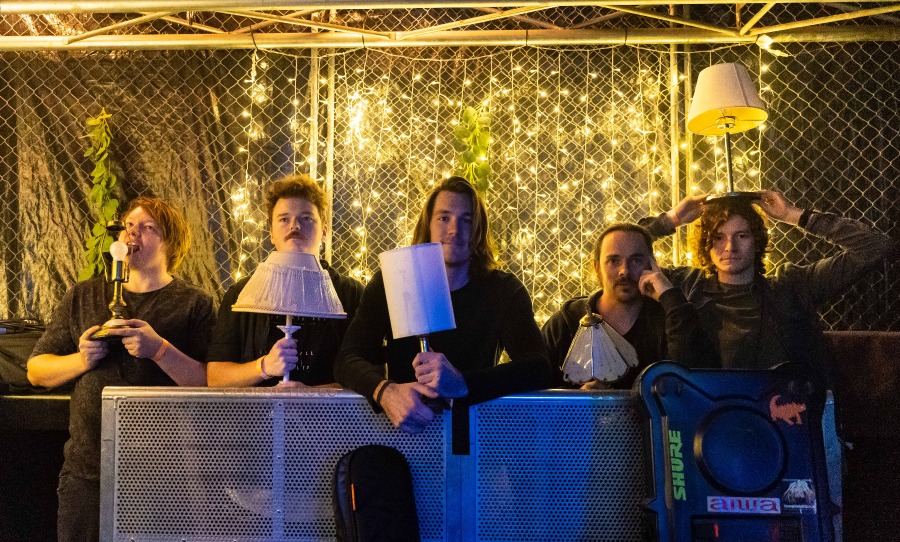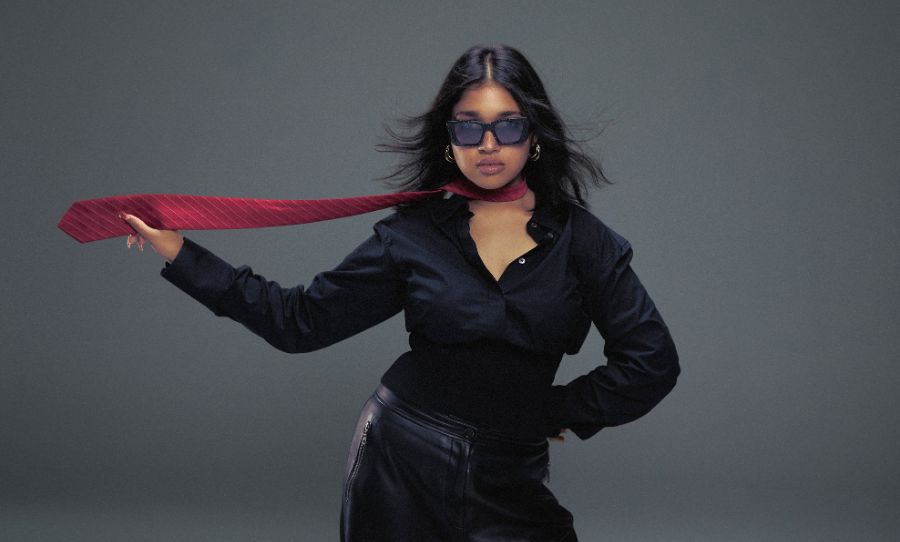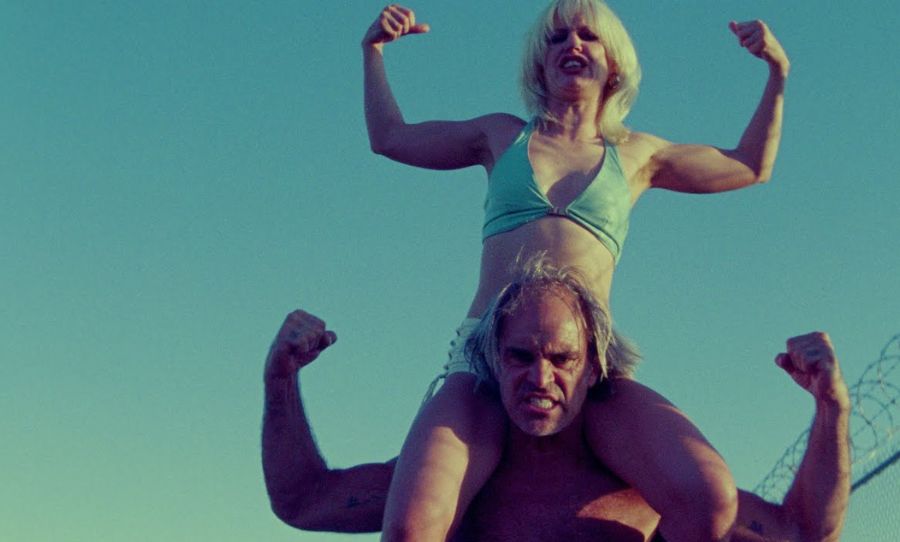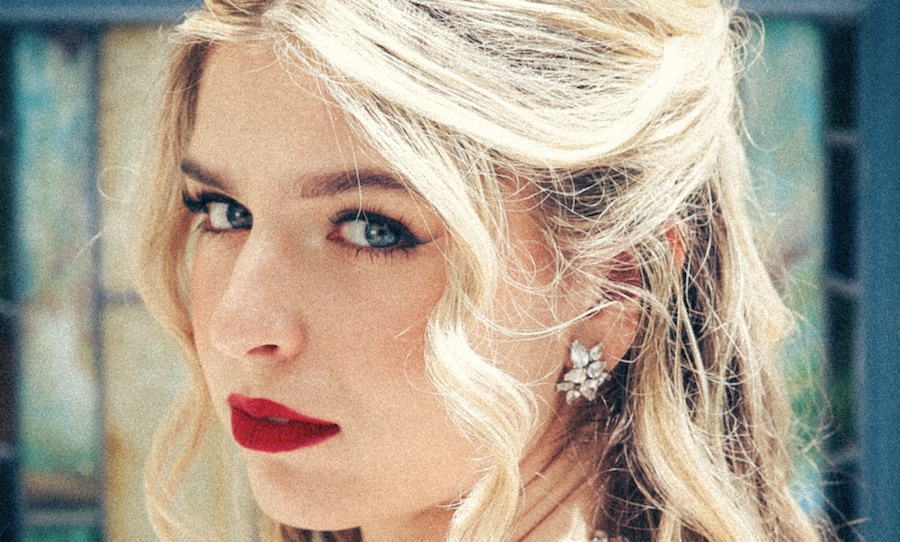Proclivity, have recently released “Paper Dollhouse”, that marks a notable shift toward cinematic electronica.
Proclivity’s Lead vocalist Hayden Wright and drummer David May shed light on the creative process behind this striking release. Hayden recounts a moment of serendipity when the song’s initial spark came to him while still half-asleep, leading to a flurry of lyric-writing.
The band’s collaborative dynamic shines through as David Ellis and Ben Tippins offer alternate versions, reflecting their collective exploration of sonic possibilities.

Proclivity’s evolution, evident in this sonic departure, attests to their willingness to embrace change. The influence of electronic elements and the guidance of producer Staywell played crucial roles in shaping the final sound.
With their upcoming album, “A Year Without a Summer”, Proclivity aims to explore humanity’s journey from exploration to modern times, with “Paper Dollhouse” serving as a powerful commentary on contemporary events.
In this candid interview, Proclivity opens up about their creative process, influences, and the artistic choices that have defined their musical journey.

Technical and Creative Process Questions
Happy: Can you tell us about the creative process behind your latest release “Paper Dollhouse”?
HW: The song’s initial conception was unusually fast. I owe it to my subconscious mind for conjuring up the main parts of the song while I was still asleep one morning. When I woke, I quickly sang and hummed all those blurry ideas into my phone and saved them as a voice recording before they faded from my brain.
Then I got out of bed, immediately fell into my desk chair, and started writing lyrics, and continued doing so for the next half-hour. It can be very disruptive, the creative spark; you don’t know when inspiration will hit.
On this particular morning, it made me very late for work, because I had to run back and forth from bathroom to bedroom, scribbling out more stanzas in the middle of my hygiene routine. (To any lyricists out there, I highly recommend showers as an antidote to writer’s block; they’re an excellent place for ideation!)
Once I had the lyrics more or less ready, I put together an instrumental in my freeware MIDI composition software, starting with the chord progressions and then fleshing it out with some melodic interludes and motifs, many of which made their way into the final version several months later.
I then recorded vocals over it and, before I knew it, “Paper Dollhouse” had its first demo. I sent it off to the guys in the band, who loved it. Dave Ellis and Ben both proceeded to create alternate versions of the song, some of which were simple and piano-driven, while others were more electronic and experimental.
Ultimately, though, when we brought it to Matt Templeman (Staywell), he helped us rebuild the song from the ground up, putting his own stamp on it while also working in the strongest sonic ideas from each version, and taking care to retain the elements from the original that were essential to its DNA.
Happy: How did the idea for this album song come about?
HW: ‘Accidentally’ would be the short answer. But in terms of influence, I think it’s probably due to the lyrics I’d written for two other Proclivity songs over the preceding months. They were also about the impact of war, and now – together with “Paper Dollhouse” – they form a trilogy of tracks which work together to discuss the topic in a meaningful way.
Happy: How the paper dollhouse metaphor originated is still a mystery to me, but it echoes the same theme of fragile beauty versus inexorable demolition, which is a classic juxtaposition that’s been captured many times in other poetic depictions – the toy soldier, the house of cards, a melting ice sculpture, a trampled flower, a sandcastle washed away, etc.
When I was fleshing out this idea, I recalled a firsthand account that my friend’s grandfather once gave regarding his family’s experience of the Blitz, wherein London was bombed by Nazi Germany on most days for a span of 8 months. That definitely informed some of the lyrics, as did the recent events of the Russo-Ukrainian War.
The shift in sound on “Paper Dollhouse” towards cinematic electronica is quite pronounced. What inspired this new direction for Proclivity?
HW: I think it’s something that’s always been there. Many of Dave Ellis’s demos have a lot of synths and other electronic elements in them, and I know he listens to a lot of music from electronica genres. And over the past decade, I’ve gradually gained a real appreciation of what electronics can bring to rock music.
I think Nine Inch Nails made it really apparent just how inventive you could get with electronics; they were probably the first band to show me the light. Rammstein are another, with the way they use electronics to bolster their already huge sound. Korn have been doing the same thing, especially in their more recent years.
And on top of that, we’re a progressive rock band. You can’t be too scared to embrace change if you’re a prog band; it kinda contradicts the ethos. Prog bands have been experimenting with sound since the beginning.
They can’t help themselves. Especially the keyboardists, who want to introduce all sorts of wacky shit into their bands’ music. And a lot of it doesn’t resemble any piano or organ I ever heard, so there’s already a blurring of the boundary there, even in your more traditional prog rock music.
Happy: Can you share some specific techniques or equipment you used to achieve the unique sound on “Paper Dollhouse”?
DE: It was a bit more of a creative collaboration than some of our other efforts. We had quite a few different versions of the song milling about – from a complete rock version, to a symphonic version. As a result we’d built up quite a library of MIDI files, which formed the basis for what would be the majority of the synths and effects.
Once we got into the studio, and we started the collaboration with Staywell, he took a lot of those parts and ran them through a bunch of soft and hard synths. Guitars were tracked live, and we even had a live drum track which I believe might have been sampled but not overly used on the track.
It wound up in our favour though, because playing the song live it allows us to add a much more heavy element to the track, which basically is us going hell for leather at the end of the song, as well as some live guitar noodling and drums as well.
One particularly cool thing was the Neural Rabea plugin which Matt Templeman had – the big synth guitars at the end are all through this. The feedback, the huge fuzzed guitars – that’s all that.
Happy: Were there any challenges you encountered during the recording process, and how did you overcome them?
DE: Honestly the hardest part was deciding on how the song was going to go. As mentioned above, we had a massive amount of different ideas floating about. And it really highlighted the advantage of working with a producer. At the end of the day, Staywell took the track, melded our ideas together and then created something which we were all blown away by.
How do you approach songwriting as a band, especially when incorporating electronic elements?
HW: It’s funny – ‘songwriting as a band’ isn’t something we’ve really done yet. This album we’re currently working on is an odd beast, because so much of its material existed prior to the band’s formation.
Dave Ellis easily had an album’s worth of instrumental demos recorded, and a bunch of thematic concepts ready to go. He gave me the freedom to go forth and write lyrics and vocal melodies for virtually all of them, which was really enjoyable and fulfilling for me, and I think it was very interesting for him to see the songs come to life in unexpected ways.
Once we grow familiar with each song in its fully written form, we’ll often go back and rearrange things; some of those changes will be structural, some of them harmonic, and some of them will involve reallocating certain parts to another instrument.
And this is where synths and electronics can be really useful, because sometimes a riff, melody, or harmony need not be performed by voice, guitar, or bass, but it can instead be included in the backing track, and sometimes it sounds way better that way!
Electronic elements give you a lot more freedom in that regard.
Inspirations and Influences
Happy: Beyond music, were there any non-musical influences that played a role in shaping the concept of “Paper Dollhouse”?
DE: I think the events currently transpiring in the world really helped shape the overall story. Hayden really wanted to bring to light the damage that conflict inflicts on the people who generally are bystanders. In the media we often hear about this war of that conflict, and it’s usually spoken about on state-actor levels.
“This country did that” or “This organisation said this” – rarely if ever do we hear from the people on the ground who have just had their homes and livelihoods completely destroyed. And I think that’s the whole point of the song.
Happy: Can you name some artists, films, or books that had a significant impact on the album’s song’s development?
HW: In terms of the music and mood, I think I was somewhat influenced by Headspace’s “Soldier”, Jed Whedon’s “Drones”, and Iron Maiden’s “When the Wild Wind Blows” – the latter of which deals with similar subject matter to “Paper Dollhouse”, and succeeds in painting a really poignant picture.
None of these songs were used as blueprints in any kind of intentional way, but upon reflection, I’m sure they shaped this song in some small way, simply by rubbing off on me.
View this post on Instagram
Proclivity Live Performance and Audience Connection
Happy: How do you plan to translate the intricate sounds of “Paper Dollhouse” into a live performance setting?
HW: I think it’s going to end up being a slightly heavier, busier version of the song. We performed it live a couple of times prior to its release, and we’ve tried a bunch of different approaches in rehearsal, and I think we’ve concluded that the song simply sounds better live by having each member accompany the arrangement with some flourishes here and there.
And then when that drop hits at around 2:20, we just go all in with it – big drums and heavy guitars. Until the day come when we have absolute control over all the technical aspects of our live show, I think the best approach to playing quiet tunes is to beef them up a bit. And the good thing about “Paper Dollhouse” is that it’s pretty versatile; it sounds good as a rock tune, piano ballad, electronica song, etc. So you can really play around with it without breaking it.
Visual and Artistic Elements
Happy: You mentioned a full music video for “Paper Dollhouse.” How does the visual component complement the music, and what can viewers expect from it?
HW: Yeah, and it’s out now! After many hours of hard work. Originally I didn’t even really want a music video. I felt like I’d said everything I wanted to say with the music, the lyrics, and the cover art. But once you commit to doing something, it’s amazing how many ideas you start to get. It gave me so many opportunities to illustrate the lyrics and themes in ways I didn’t anticipate.
So basically, the video revolves around a singular prop – a wooden dollhouse covered papier-mâché style in war-related newspaper articles. I tried specifically to track down articles that reported on aerial bombings from WWI to the present day. It felt almost like a research assignment, in that I got totally immersed in the topic, and read about some of the smaller stories that comprise our history’s major conflicts.
It was interesting to find headlines, excerpts, and quotations that related to the song’s lyrics and messages. There was a lot of opportunity for commentary when the time came to compile those articles into a collage over the surfaces of the dollhouse, and we tried our best to highlight those parts of the dollhouse in the video.
In the end, I was actually really proud of that dollhouse, even though it was a mission-and-a-half to get done. I think it looked wicked. It felt like a real shame to burn the whole thing to ash at the end, but it felt appropriate. The song itself is about loss, and the video needed to sincerely reflect that.
Happy: Is there a particular aesthetic or visual theme that you associate with “Paper Dollhouse”?
HW: Yes. It’s the collapse of something intricate, delicate, valuable, and virtuous when confronted with a destructive force. There are many ways of illustrating that concept, but in this case, it’s the imagery of paper consumed by fire. That has been the common visual theme that we’ve included in all of the art and media surrounding this release.
Conceptual and Narrative
Happy: Can you elaborate on the overarching concept or narrative that ties the songs on “Paper Dollhouse” together with the other songs on the album?
DE: Well, the upcoming album “A Year Without a Summer” is a concept album. Essentially it traces humanity from it’s origins of exploration, through to the present day, through to what the future looks like. This song sits reasonably in the middle of the album, and is kind of the part commenting on today’s events.
Are there recurring motifs or themes that listeners should be attentive to while experiencing the album song?
HW: There’s nothing too fancy going on with this one, really. In a lot of our other songs, yeah, we’ll reprise certain sections and reference other parts of the song, but this one is more straightforward in its structure. The original composition was uncomplicated, and we intentionally tried to keep it that way, believing that simplicity is what served this song the best. As long as we could get a good sound and a good performance, that would be enough.
So, instead of looking for easter eggs or hoping for any structural cleverness, I mostly just want people to listen undistracted. I think we’ve created a beautiful song that speaks for itself, and I just want listeners to give those melodies an opportunity to shine.
A decent pair of headphones is also not a bad idea. Matt went deep on this one, making sure this mix sounded vibrant and well-balanced from top to bottom. It might be a simple song, but it’s like an onion or an ogre: it’s got layers. So I think new things will pop out to you on each listen.
And last but not least, anyone who has the time to read the lyrics will have my undying gratitude. I love it when people engage with the lyrics and talk to me about them. I get a lot out of those conversations, even when the listener’s interpretation is wildly different to my intended message. I still appreciate hearing what people got out of it, and it invariably results in a really fun exchange of ideas.
Reflections on Growth and Evolution
Happy: Looking back on your earlier work compared to “Paper Dollhouse,” how do you feel the band has evolved musically and creatively?
DE: Well we are still very much at the start of our career. This song is, admittedly, a bit of a left-turn from our usual style, but we released this one because it showcases the other side of our influences – the synth-heavy qualities of the likes of Porcupine Tree, Massive Attack and so on.
Whereas “MANIA” was a reflection of our straight-out rock influences like Dream Theater, TOOL, and Karnivool. Our next track will be the melding of these two, showing Proclivity in full force.
Happy: What lessons or insights did you gain from creating this album song that you think will shape your future work?
HW: I think the response has been the main thing. The reaction from those who’ve listened has been nothing but positive so far. Even when we shared the demo with people in our inner sanctum, they were exceptionally complimentary.
So that’s been really encouraging, to know that we can take a real stylistic detour and still create something that people love. That gives us the confidence to potentially move further down this path in the future.
View this post on Instagram
Proclivity Collaborative Dynamics
Happy: How did the collaboration with hip-hop producer Staywell come about, and what do you feel he brought to the creative process of this album song?
HW: Well, the thing about Matt is that he’s not a one-trick pony; he just loves music and is obsessed with sound. He seems to have done a bit of everything, and his oeuvre is growing all the time.
We started working with him because of our shared love of heavy metal, and when we worked with him on “MANIA”, we got to see firsthand why he has such a good reputation as a metal producer.
Then when it came time to do “Paper Dollhouse”, because of his versatility, it was just a matter of him doffing the metal hat and donning the electronica hat.
And from the get-go, we were really confident with his treatment of the song. He showed us very quickly that he knows what he’s doing in this space just as much as he does in the metal space. From there, we gave him a lot of creative freedom, knowing that he’d help us craft something really slick that we could have never concocted by ourselves.
Happy: “Paper Dollhouse” was recorded in Fremantle and overseen by Staywell. How did the location and the producer contribute to the overall atmosphere and sound of the album?
HW: Fremantle is somewhat of a miracle. It’s like a cultural bastion. In a region of the country that’s generally so apathetic towards the arts, Fremantle has managed to continually cultivate and sustain an awesome creative hub.
It’s a beautiful coastal city that has protected its heritage buildings, historical artefacts, and natural environment. In combination, those things have created an atmosphere and aesthetic that’s very attractive for artists, eccentrics, and passionate people who gravitate towards this place and keep it interesting.
In my opinion, it’s a diamond in the rough, and I couldn’t think of anywhere else in the state that I’d rather make music.
I’m always more comfortable, and therefore more creative, when I feel a sense of belonging and connection to my surroundings. I’m sure it makes me much easier to work with as well.
So I’m really grateful that these sessions took place in Freo, and that we’ll be going back there next month to do it all again! I really can’t wait to re-enter the studio. Hopping Mouse have such a cool setup, and it just feels like a home away from home.
As for Matt, he’s just so good to work with. Not only does he know his stuff and have a uniquely creative mind, but he’s got a heart of gold too. He goes out of his way to make sure the people he’s working with are comfortable and at ease.
A lot of those sessions just felt like a fun, laid-back hangout. And as long as we’re still getting the job done and the music is getting made, then that’s exactly the vibe you want.
It got me into exactly the right headspace for collaborating, experimenting, and putting forward ideas. And when it came time to track vocals, I felt way more confident than I was expecting. I could just go for it, and I think that resulted in better takes.
At the end of the day, that’s one of the things that a good producer needs to do: get the best out of the people they’re working with. I reckon Matt does that, and he does that in the best way – by being positive and encouraging, while also being realistic and honest.
Happy: How does Proclivity work together in terms of decision-making, especially when exploring new sonic territories like on “Paper Dollhouse”?
HW: It works fairly democratically. Those who had a hand in writing the material probably tacitly have more authority over its sonic characteristics, but most things work on a majority rules basis, and any stylistic direction that can’t be unanimously agreed upon will be discussed until we can reach a compromise.
Overall, though, we’re all pretty open minded, and each of us has a broad range of influences, which makes it a lot easier to take things into more experimental territory without fear of internal division.
Happy: Can you share a moment from the recording process that exemplifies the collaborative spirit of Proclivity?
HW: The collaborative spirit of Proclivity was exemplified throughout the whole production of this song, actually – moment to moment. I say this because everyone continually showed up and wore their excitement on their sleeve, even though some of them didn’t actually have any parts in this song.
Everyone made sure they were present for those arranging and mixing sessions because they had a vested interest in seeing the song take shape in real time, and they all wanted to put forward their ideas and feedback for the purpose of guiding the song toward its full potential.
And that’s so important, because at the end of the day, a band’s musical identity is determined by so much more than whose names appear in the writing and performance credits; it’s also dependent on the subtle influence that individuals can have on the band’s culture, creative processes, and the atmosphere of the creative space.
Get your goodselves to Lynott’s Lounge (Northbridge, WA) tomorrow – Saturday 14th to catch Proclivity perform IRL. Tickets here.



